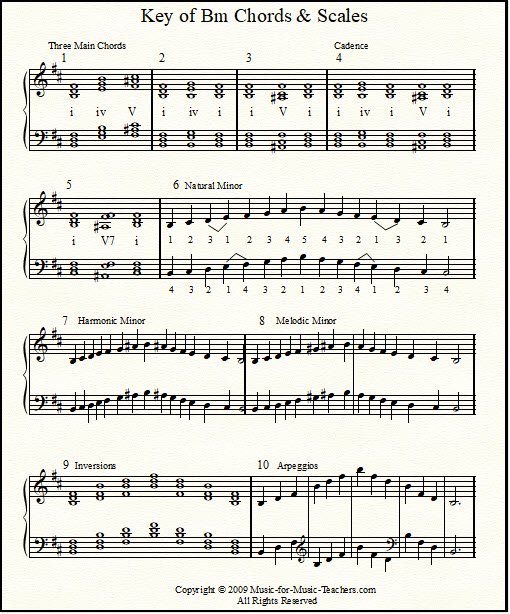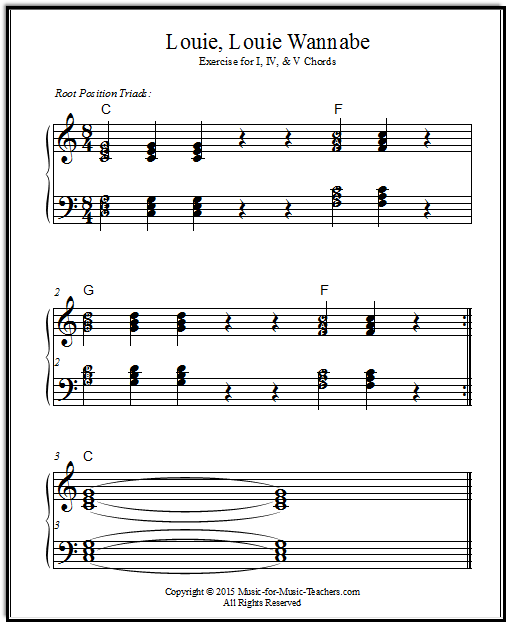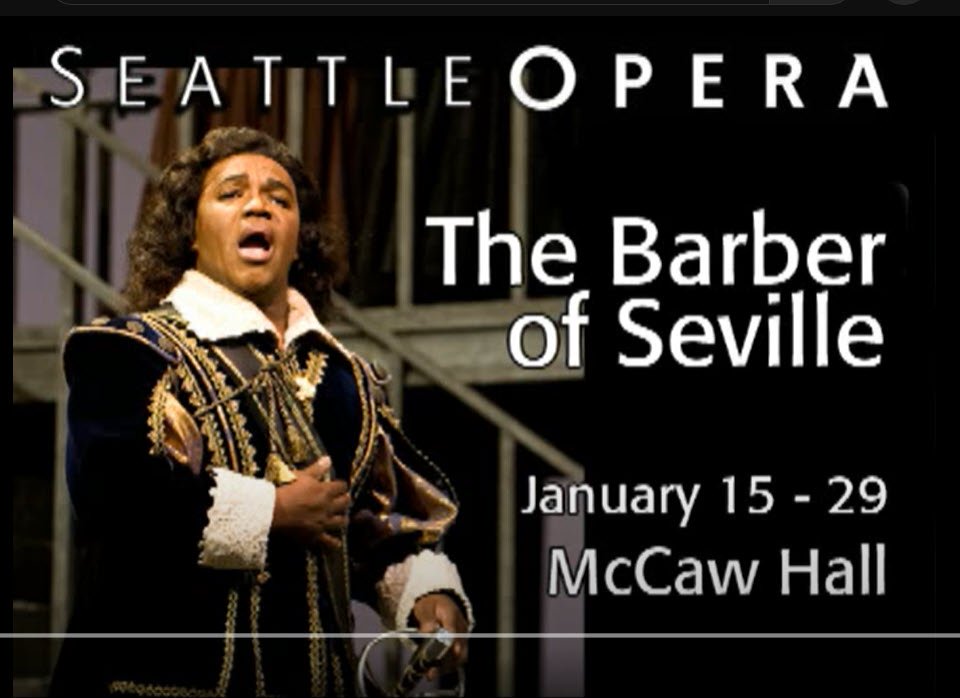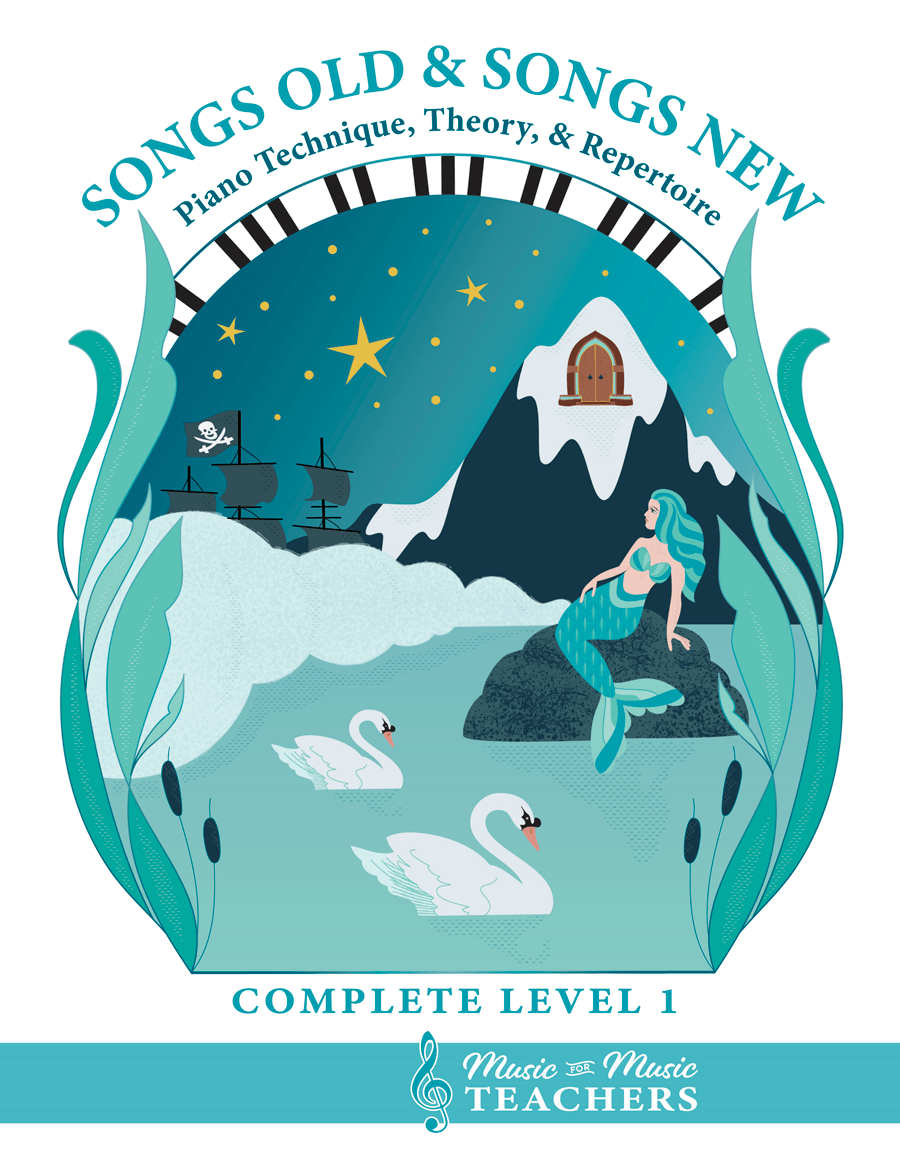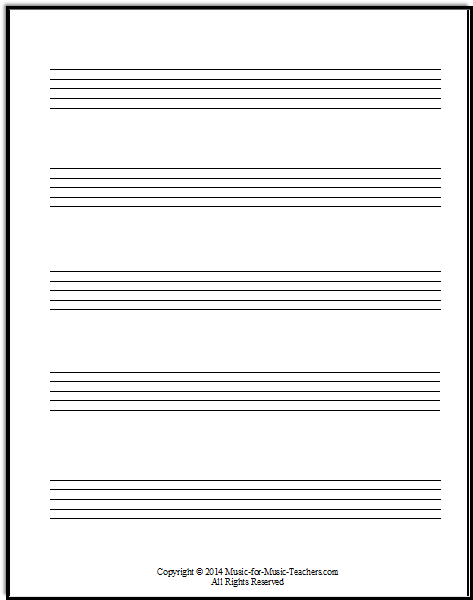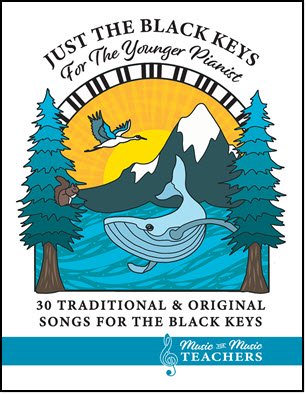Reading Piano Music
Reading piano music is hard for beginners... As their teacher, you feel responsible if your piano teaching methods don't work miracles at once.
Be patient
Don't be discouraged if it seems to take a while for them to get the "code"! Check out a few ideas below for how to teach music notes to beginners, in a reply I penned to Nancy...
Nancy:
In September I decided to take a few piano students (4) after not teaching for 33 years!
Three of my students (grades 4 & 5) are still uncertain about their note "names" even after teaching them the acronym for EGBDF and FACE, etc. I adore my students and we have a great student-piano relationship.
My students are smart, but they're not reading notes
These girls are extremely bright academically speaking but I haven't been able to "unlock the key" for them in this arena of the "basics of music". I am very blessed to have these students and once they learn a song, they are excited.
However, they are very frustrated and I don't want them to give up. Do you have any suggestions for me to help them grasp the "note names" of lines and spaces"?
Dana:
Hi, Nancy,
I don't think you need to be worried about the girls' note-reading.
I have found that the "Every Good Boy Does Fine" approach is only helpful for the occasional student, though I still keep it in my "How to Teach Music" tool bag & say it with all of my students. Along with bass clef "Great Big Dragons Fly Around" for the line notes, and "All Cows Eat Grass" for the bass clef space notes. And "F-A-C-E" for the treble clef space notes!
Mnemonics are only a LITTLE BIT helpful
Most of them don't actually start using that particular memory device on their own for 2 or 3 years, unless you repeat it at at every lesson, and have them DRAW IT as well, and even then, it's worthless unless you make them find THOSE VERY KEYS ON THE PIANO KEYBOARD.
Those exact keys! Ask them to press the keys, and you may find them an octave or two off.
Voice of experience here. I do still use that device, though, and in the bass clef, one that I picked up from one of my own students: Great Big Dragons Fly Around!
But, you say that they are FRUSTRATED... and so this must be addressed.
First, assure them that learning to read music is a PROCESS, just like learning to speak the English language or learning MORSE code or any secret code, and that the more they do it, the better they will get.
Then tell them that you will be continuing to work on their "language skills" every week.
DRAW or write the notes
What I have found most useful for reading piano music are activities such as making sure they can draw MIDDLE C.
My very favorite DRAWING LESSON continues for months of lessons, and consists of:
- Drawing, each of us on our own side of a whiteboard, 11 straight horizontal lines.
- Discussing how "Once upon a time, the musical staff had so many lines, that it was very hard to identify the notes, even with the G and F clef signs!"
- "So... the middle line was erased" (now we count up or down to the 6th line, and erase it with a fingertip.
- I tell them that is where Middle C on the piano goes, and we must always remember that IT IS STILL REALLY THERE!
Middle C is on an invisible line
So we draw "the invisible Middle C line," which looks like dashes: - - - - - - - - , right where the 6th line was.
The invisible Middle C note becomes an old friend, one they can locate and draw, with its special little line. And we are always looking for it in their music, because it is the best reference point for piano players.
These somewhat hasty drawings are an example of what I'm talking about... except that the "invisible Middle C line" was not drawn in this lesson!
Get kids off the piano bench
One side of the board is for me, and the other side is for them. (And when we are done drawing, it's time for an ERASER RACE! I usually win, unapologetically.)
Drawing on the board like this is better for retention than ANY of the games we play.
Try simply copying music onto staff paper
Another idea: what is surprising is to find that having your student merely copy a measure or two of music from their lesson book to the board will frequently reveal misunderstandings. That activity will show you just what your student knows.
I suggest that you buy a cloth staff/keyboard from Neil A Kjos -- I use my 2 cloth keyboards every week, perhaps every teaching day.
Or construct your own out of butcher paper, as one of my student teachers did. (By the way, I bought my keyboards years ago from "Three Cranky Women Resources" - TCW Resources - for about $12 each. Apparently they sold out to Neil A Kjos, and now 2 keyboards plus game supplies cost - at last check - $49.99!!!)
Here you see one of my students placing little note-name cards on the cloth staffs. (I downloaded the free PDF for the cards from Susan Paradis's site.)
Be sure to mix it up with games
On the flip side of the staff is a keyboard. Use GAMES, lots of games, to approach the note-reading from different angles.
Anyway, it's a nice break for kids to get down on the floor, and even the older kids love to examine the variety of little animals I have for placing on the cloth keyboards!
Fluency may be a long time coming
Make up your mind to accept the possibility that it may be a long time until there is ease in reading piano music!
I would make sure that every week or so they are working on an extra-easy piece, or even one that they have already conquered.
If you think that they can do it without tears (!), assign to them, occasionally, to play 1 time a day saying the Note Names ALOUD -- OR, just do it with them then & there at the lesson, and again the following week. (But they will probably hate it!)
Many things must happen simultaneously
Don't assume reading piano music will come quickly. It is HARD, because so many things must happen at once... correct hand posture, correct fingers numbers, correct timing, correct dynamics, correct notes.
I would settle for one thing at a time, or two or three -- when they are saying note names, let the timing go (or be very flexible). Even their hand position - LOOK AWAY if it pains you!
Create a routine for new music
When they begin a song, I usually go through a routine that helps them focus on where to place their hands. My routine is a mantra with gestures:
- WHICH HAND?
- WHICH FINGER?
- WHICH NOTE?
This is also a "game"
First, I say, "Hands behind your back!", Then,
I say "Which hand?" and hold up both my hands, fingers spread. They copy me, bringing out from behind their back the hand that plays first. (In later music, hands frequently begin simultaneously, of course...)
Then I say "Which finger (goes first)?" wiggling my fingers. They peer closely at the music and wiggle the correct finger, IF THEY CAN FIND IT. I wiggle mine, too. If they CAN'T FIND THE FINGER NUMBER, then that tells you there is another thing to work on!
Lastly, I ask, "Which NOTE?" and then we figure out what that note is, by one or more methods. Sometimes we might turn back a page to a previous song and find that same note.
Your own imagination, in combination with the music that they are using, will suggest many ideas for reading piano music.
Flashcards are the LEAST fun -- you can turn them into a game at the studio, but at home they will almost certainly be neglected unless you have got a parent firmly committed to the task of reading piano music!
Update: These cards for the game "NoteSpeed", which can be found at Amazon, are VERY FUN indeed!
The idea is to get rid of the cards
Like the game Speed or even Solitaire, the players must lay cards down on top of the card piles which are:
- the same note
- the note one step higher
- the note one step lower
- in advanced versions, the same note up or down an octave!
To make the game even more fun, both players go simultaneously without stopping, and must call out the name of each card as they set it down.
The challenge: what note is next to this note?

The most basic level is perfect even for first-lesson beginners: just the letters A, B, C, D, E, F, G.
What cards can you lay down on an "A"?
Either another A, or a B, or a G! And don't forget to shout the name of the card as you lay it down.
I discovered that one of my very quiet new students actually has a voice after all, when we played this game - he was out-shouting me!
Don't feel like you are a bad teacher if it takes them a while to get fast at reading piano music, and never underestimate the value of games - get away from the piano and down on the floor!
I like to repeat a new game for a few weeks, because they will remember it from one week to the next and improve, carrying the skills into their playing.
Sometimes you will decide that a particular game is a bit of a dud, but with a twist, it might work for another student's needs. Kids are all so different.
This is like "secret code" - for musicians!
Remember that reading piano music is truly learning a new language, and it will be halting for a long time. I even tell them that from time to time:
"You are learning a new language! Like Morse code... or a secret code! Naturally, you will get better, the more you read this new language."
Continue to quiz and re-quiz them on even the simplest things, such as "Where is Middle C?" (So many kids think it is a different note for the different hands.)
And since they can't read hard music yet, have fun with what they CAN do.
Use lead sheets, and add left hand chords
Also, introduce chord playing (see Greensleeves & Mary Had a Little Lamb) and composing, transposing, and using chords to play VERY SIMPLE leadsheets (such as Ode to Joy!) -- don't worry that they'll never learn to read if you allow them to play by ear.
Good luck!
Music for Music Teachers has other great free resources for piano teachers! Take a look:

IMSLP -This link will take you off my site, to an international library of free classical sheet music.

Studio Favorite, currently! This changes from time to time.
"Passacaglia" is based on a piece by Handel, and it is NOT found on my website.
Dianna:
Your website is a light in the darkness. THANK YOU for all you do in helping to spread the love of music. It matters!
Recent Articles
-
Favorite Christmas Songs: Duet Vocal Sheet Music
The best duet Christmas songs are those ones you knew & loved as a child! This set of 14 "a capella" carols arranged for 2 voices is just right for caroling! -
"Walking In the Air" Piano Music from The Snowman
This sparkling piano arrangement of the main musical theme from The Snowman will win your students' hearts and imaginations, too, with its soaring beauty! -
Moonlight Sonata: How to Play Beethoven's Lovely Piece
Moonlight Sonata: How to play this beautiful but difficult piece full of black keys & triplets? With larger-than-usual notes, & letters inside the note heads! -
Classical Piano Sheet Music: a Set of Introductions
Classical piano sheet music - Fun, mostly one-page intros! Bach, Beethoven, Mozart & more - see what's new! -
Singing In a Round: "Come Away" Has Six Possible Parts!
Singing in a round is a fun challenge for voice students! This pretty song, "Come Away," can be sung with as few as 2 voices, or as many as 6. Free PDFs!!
Interested in songs from the Bible for your students or church? Check out my other website, SingTheBibleStory.com!

All the first-year material I give my beginner students.
Piano keyboard sheets, scales, chords, note-reading exercises, and over 256 pages of music!

This beautiful song book for piano & voice "Esther, For Such a Time as This", available as a digital download, tells the riveting story of the time when Jews in ancient Persia faced a foe named Haman, and how a brave young queen risked her life to save her people.
A good choice for a singing story-teller, an operatic group, a short theater production, or a class of children!
This book is also available from Amazon as a paperback.
This book is available as a digital download from this site. Visit this page to see some free examples from the book.
It is also available from Amazon as a paperback!
This is the perfect easy start for little pianists.
And when they start reading white-key notes on the staff, this is a fun easy resource to say each week, "Choose a new black-key song at home this week and figure it out to show me next lesson!" They will be spending more time at the piano.
A perfect read aloud storybook
for little boys or girls.
The Adventures of Tonsta highlight the travels of a very young boy with a good heart, who goes about helping folk in trouble.
With a red cap on his head and a sack of tools slung over his shoulder, Tonsta seems to meet people in distress wherever he goes.
Lots of trolls in this book - including one who gives him a Christmas gift!
Kay, US:
...wanted to let you know that I love using your early beginner sheet music with the alphanotes.
I have 10 beginners who began piano this fall, and your materials are great, especially the Christmas pieces, to bridge that time of just starting to read a few notes and being able to play more complicated rhythms.
Your site has helped my studio a great deal. Thank you for sharing!!!! Merry Christmas!
Cat:
Thank you so much for these resources - I have a small music studio in Johannesburg, South Africa.
My kids love playing these tunes.
About the Author

Hi, I'm Dana! (Say that like "Anna".) I'm the owner of Music-for-Music-Teachers.com, and a newer site, SingTheBibleStory.com.
Like some of you, I've been playing the piano since early childhood, and have added a few other instruments along the way, plus an interest in arranging and composing music.
You can find out more about me and the reason for this website at my About Me page.





